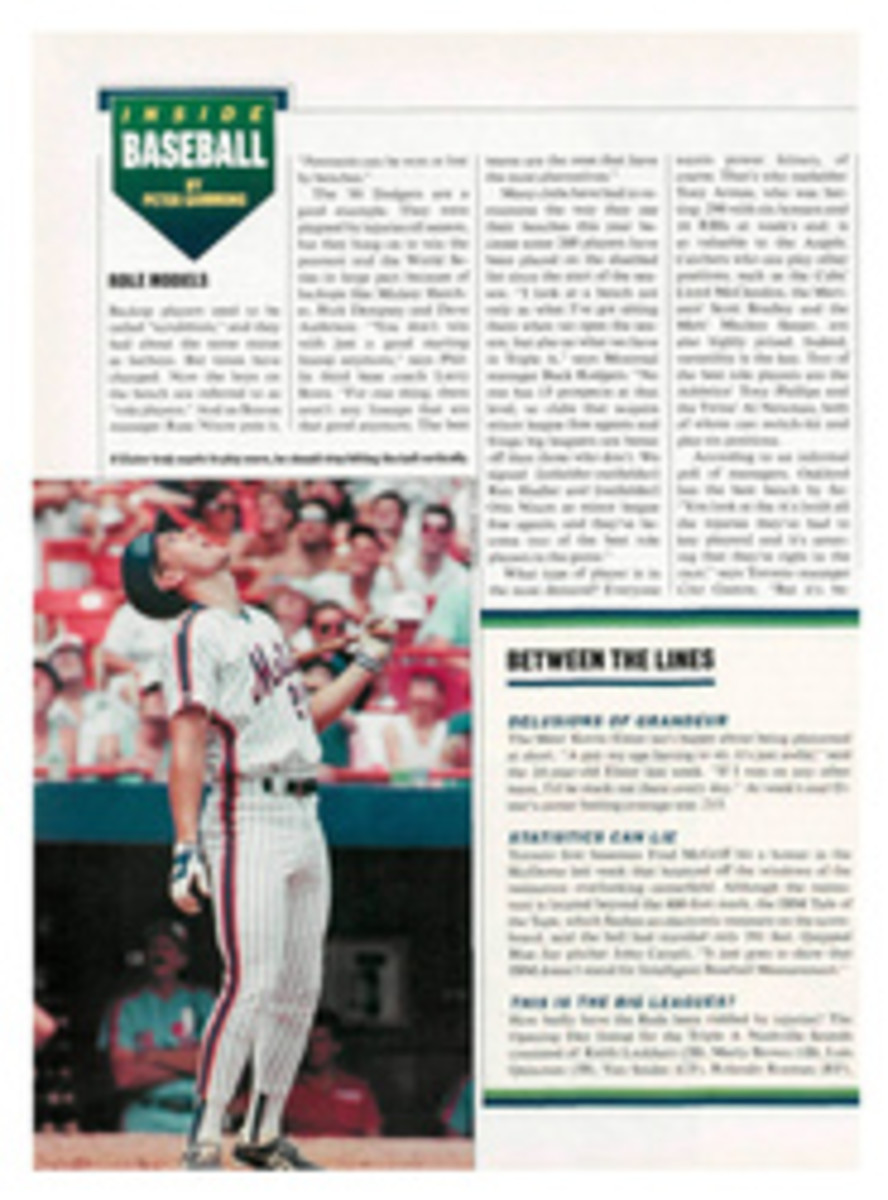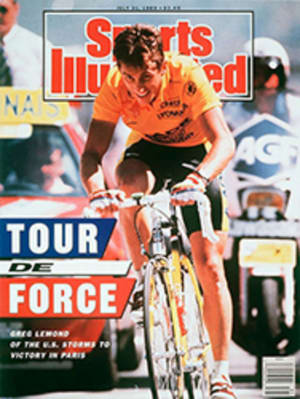
SCORECARD
UPDATES
•In a victory for proponents of legalized sports gambling, the Oregon lottery commission last week approved plans for Sports Action, a statewide football lottery (SI, June 19) to begin in September. Each week during the NFL season, lottery players will try to beat the point spread on some or all of that week's games. The NFL says it may sue to stop the lottery on the grounds that it threatens the sport's integrity. But Oregon lottery officials believe that Sports Action would survive a legal challenge, and they may eventually expand the lottery to include NBA and major league baseball games. Sports Action's proceeds will be used to fund intercollegiate athletics at Oregon's seven state colleges and universities.
•A North Carolina university system commission has completed its six-month investigation of the N.C. State basketball program—but without the full cooperation of Wolfpack coach Jim Valvano and his players. The probe was prompted by revelations on the prematurely released dust jacket of Peter Golenbock's book on the Wolfpack program, Personal Fouls (SI, Jan. 30, et seq.), which is to be pubished in September. According to Samuel Poole, vice-chairman of the system's board of governors and head of the investigative commission, all current N.C. State players either refused to speak with investigators or claimed not to know anything about alleged wrongdoing in the Wolfpack program, which according to the dust jacket included payments to players. "It certainly was frustrating," says Poole, who last week presented the commission's findings to C.D. Spangler Jr., head of the North Carolina university system. "You really don't get the full story."
Valvano did speak with investigators but would not release business records from his company, JTV Enterprises. "We were informed that a player or players had been employed by the company, and we wanted to look at those records," says Poole. Although some state officials object, Spangler says he won't issue a written version of the commission's findings; he will present them orally to the board at a meeting in August.
BASEBALL BUFF
"I call it sex art," says Ziff Sistrunk, director of the Chicago Sports Council and bullhorn-toting protest leader. Sistrunk and 20 or so boys from his youth sports program recently marched outside the Chicago Public Library demanding that New York City artist Eric Fischl's oil painting Boys at Bat, which is hanging in the library's cultural center as part of a touring baseball art exhibition, be removed. The painting depicts a muscular man, dressed only in a baseball cap, swinging a bat in front of a fully uniformed and rather perplexed-looking Little Leaguer. "Tell me, why is that man naked?" says Sistrunk. "The painting has nothing to do with baseball. It's pushing child molestation."
Fischl's painting also stirred controversy in some of the seven other cities through which the exhibition has passed. A gallery in West Palm Beach, Fla., refused to display Boys at Bat at all. "There is this growing literalness, fundamentalism and lack of tolerance," says Alene Valkanas of the Illinois Arts Alliance. "Artists have always stretched the envelope and raised important questions. But right now people don't seem interested in the answers."
In response to Sistrunk's objections, the library has posted a sign warning visitors that the baseball exhibition contains works that some may consider objectionable. Fischl's reaction to Sistrunk is somewhat sharper. "That guy's response is totally irrational and misguided," says the artist. "I think the picture portrays the anxiety boys have about becoming men. There's that great line about baseball being a boys' game played by men. That's what this is all about. It's showing the rite of passage and the frustrations inherent in that."
THE MOORE TRAGEDY
Loren Coleman, a researcher at the Human Services Development Institute at the University of Southern Maine and the author of Suicide Clusters, a 1987 book that examines suicide patterns, is finishing up a study of suicide among major league baseball players. He found that 77 big leaguers had taken their lives—most of them after leaving the game—and concluded that baseball needs a counseling program to help players adjust to retirement. In a letter last October to then commissioner Peter Ueberroth and team owners, Coleman warned that another baseball suicide was statistically likely in 1989 or 1990.
Sadly, Coleman's prediction came true last week. On July 19, at his home in Anaheim, Calif., former All-Star relief pitcher Donnie Moore drew a gun, shot and critically wounded his wife, Tonya, with whom police say he had been arguing, and then shot and killed himself. Moore, 35, had been released on June 12 by the Kansas City Royals' minor league affiliate in Omaha.
Friends say that Moore was haunted by memories of the two-strike, two-out, ninth-inning home run he gave up to Dave Henderson of the Boston Red Sox while pitching for the Angels in Game 5 of the 1986 American League Championship Series. If Moore had retired Henderson, California would have won the series four games to one. Instead, Boston won Game 5 in extra innings and then triumphed in Games 6 and 7 to advance to the World Series against the Mets.
Coleman's findings show Moore's death to be, at least on the surface, a textbook case of baseball suicide. Coleman found that about half the players who took their lives used guns to kill themselves, and 45% were—like Moore—righthanded pitchers. (Curiously, none of the suicide victims was a lefthanded pitcher.) More than half the victims committed suicide between their late 20's and late 40's, and 15% did so within two years after their major league careers had ended. Moore's final big league season was 1988.
Says Coleman of the pattern he found in baseball suicides, "They get to the big leagues, something happens—an injury or a bad season—their career ends, and they have no safety net, no way of coping."
THE LAST OF A BREED
The Last Son Of The Remarkable Thoroughbred Northern Dancer Went through the sales ring last week at Keeneland in Lexington, Ky. When the nervous yearling colt reared and whinnied, he elicited a gasp from the crowd of international big spenders and a chuckle from auctioneer Tom Caldwell, who said, "Look at that—he's performing for y'all."
Maybe so, but the star of this show was the colt's sire, now 28 and living at Windfields Farm in Maryland. Northern Dancer, who's so infirm that the farm won't even allow him to be photographed, won the 1964 Kentucky Derby and Preakness, then went to stud and set records that may never be broken. Dancer's sons and daughters have brought more than $200 million at auction since 1967, and include 28 international champions and 137 stakes winners.
Of three mares Northern Dancer impregnated early in 1987, just before his breeding career ended because of a lack of interest, two delivered foals, both colts. The first, out of the mare Gleaming Smile, brought $700,000 last week—a paltry sum, considering that other Northern Dancer colts have sold for as much as $10 million. But the other, out of the top European mare Mrs. Penny, went for $2.8 million, the highest price of the Keeneland sale.
The seller of the last Northern Dancer colt was Kentucky business magnate W.T. Young. The buyer was Zenya Yoshida of Japan, whose Shadai Farm has been his country's leading breeder for more than 20 years. Yoshida last electrified Keeneland in 1973, when he and some partners bought the final son of another prepotent sire, Bold Ruler, for a then-record $600,000. That colt, Wajima, became the 1975 American 3-year-old champion.
U.S. breeders hope Yoshida's purchase signals the beginning of a big Japanese move into the sagging American market. Yoshida hopes he's found a successor to 19-year-old Northern Taste, another son of Northern Dancer, who has been Japan's leading stallion for seven years.
—WILLIAM F. REED
ILLUSTRATION
PATRICK MCDONNELL
PHOTO
RON GARRISON/HERALD LEADER
Northern Dancer's final colt reared splendidly, as befits one of such splendid rearing.
THEY SAID IT
•Pete Rose, Cincinnati manager, after being told that outfielder Kal Daniels, who had just been traded by the Reds to the Dodgers, was complaining to reporters that he hadn't gotten enough publicity in Cincinnati: "Believe me, publicity isn't what it's made out to be."

